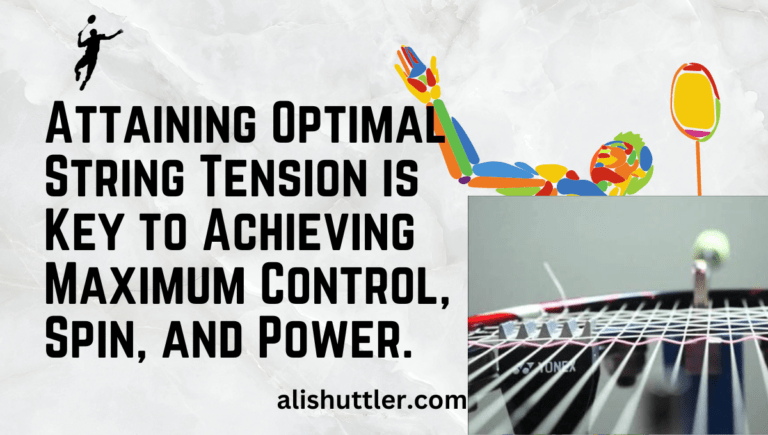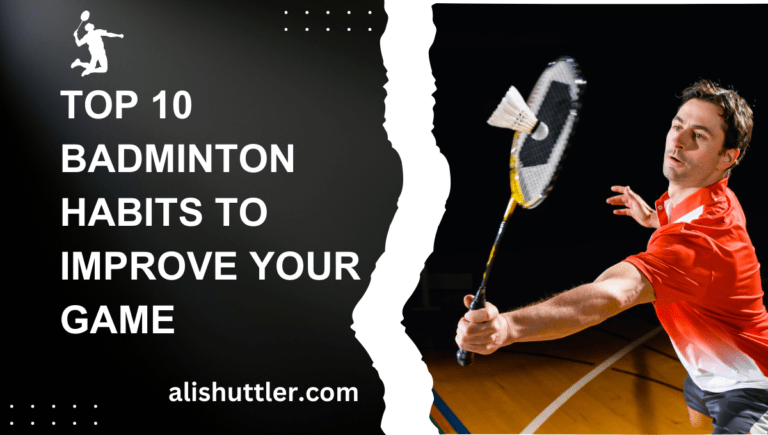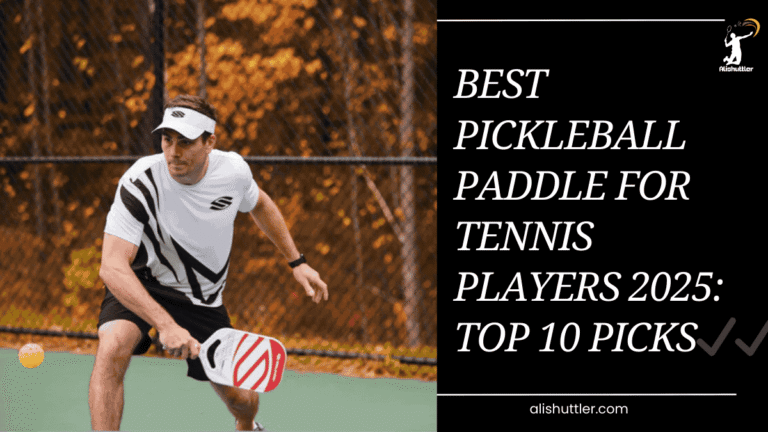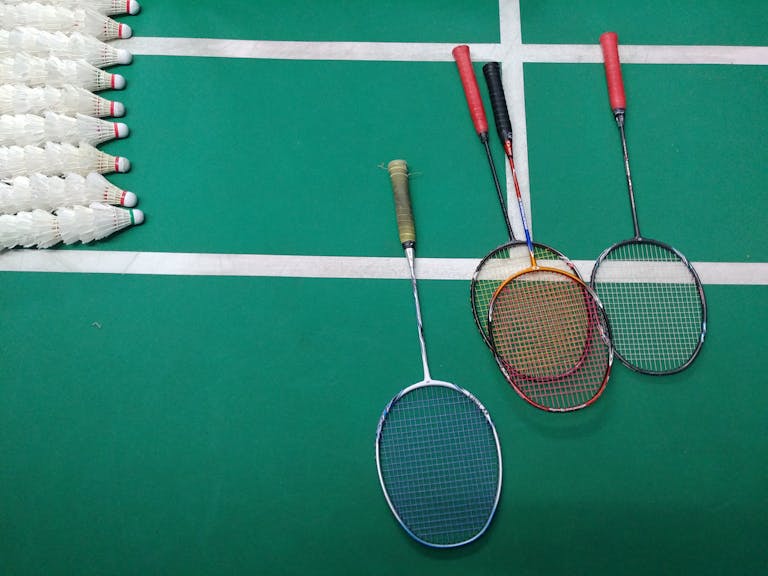Picture this: You’re on the court, shuttlecock or ball in hand, ready to kick off the rally. Your opponent’s watching, waiting. This is your moment—the serve. It’s the one shot you control completely, the chance to set the tone, catch them off guard, or just flat-out dominate. Whether you’re swinging a tennis racket, a badminton shuttle, or a padel paddle, a killer serve can make or break your game. But here’s the thing: serving isn’t about brute force—it’s about technique, timing, and a little bit of swagger.
In racquet sports, the serve varies wildly from tennis’s booming aces to badminton’s sneaky flicks. So, how do you Master the Serve it across the board? In this guide, we’re diving deep into serving fundamentals for every major racquet sport—tennis, badminton, squash, pickleball, padel, and table tennis. From power to spin to placement, we’ll break down the techniques, share pro tips, and help you elevate your game in 2025. Let’s get serving!
Why the Serve Matters in Racquet Sports
Before we grip our rackets, let’s talk about why the serve is the unsung hero of racquet sports. It’s your opening move, your chance to dictate the rally’s pace and direction. A weak serve hands your opponent an easy attack; a strong one puts them on the defensive. In tennis, an ace can win you a point outright. In badminton, a deceptive serve can force a lift you’ll smash right back. Across all sports, it’s about control—mental and physical.
The serve’s beauty lies in its universality. Every racquet sport has one, but each tweaks the formula. Tennis demands power and spin, badminton thrives on precision, and padel keeps it simple yet strategic. Mastering it means understanding the basics—grip, stance, swing—and adapting them to your game. Ready to dig in? Let’s start with the essentials.
Serving Basics: The Foundation of a Great Shot
No matter the sport, a great serve rests on three pillars: grip, stance, and mechanics. Think of these as your toolkit—they’re simple, but tweak them right, and you’ll unlock power, spin, and accuracy.
Grip It Right
Your grip sets the stage. In tennis, the continental grip (like shaking hands with the racket) is king for versatility. Badminton players use a backhand grip for low serves or forehand for high ones. Padel and pickleball lean toward a relaxed, neutral hold—nothing too fancy. The trick? Hold firm but not tight—think of cradling an egg, not crushing it.

Stand Your Ground
Stance is about balance. In tennis, face sideways, feet shoulder-width apart, weight on your back foot. Badminton? Stand close to the line, front foot forward for control. Squash players angle toward the wall, while padel’s doubles setup means standing diagonal to the net. Stability’s key—rock too much, and your serve’s toast.
Swing with Purpose
Mechanics tie it all together. It’s less about arm strength, more about timing. A smooth backswing, a snap at contact, and a follow-through that flows naturally. Add wrist action for spin or deception—especially in table tennis or badminton—and you’ve got a recipe for success.
Now, let’s take these basics and tailor them to each sport. Here’s how to serve like a champ, no matter what you’re playing.
Sport-by-Sport Serve Breakdown
Tennis: Power, Spin, and Placement
Tennis serves are the heavy artillery of racquet sports—think Novak Djokovic firing 120 mph aces. You’ve got three main flavors: flat, slice, and kick.
- Flat Serve: Pure power. Toss the ball high, snap your wrist, and drive it straight. Aim for the corners—speed’s your weapon.
- Slice Serve: Add sidespin. Angle your racket face slightly, brush the ball’s side, and watch it curve. Perfect for pulling opponents wide.
- Kick Serve: Topspin’s the star. Toss behind your head, brush up on the ball, and it’ll bounce high, messing with their return.
Pro Tip: Practice the toss—it’s half the battle. Too low, and you’ll net it; too high, and timing’s off. In 2025, pros are using smart rackets to tweak spin rates—keep an eye on that tech!
Badminton: Precision Meets Deception
Badminton serves are subtle but deadly—less about power and more about setting up your smash. You’ve got high, low, and flick serves.
- High Serve: Loft it deep to the backcourt. Use a forehand grip, relax your arm, and push upward. Aim to force a defensive lift.
- Low Serve: Skim the net. Backhand grip, short swing, gentle wrist flick—keep it tight and low to limit their attack.
- Flick Serve: Surprise them. Start like a low serve, then snap your wrist up at the last second. It’s a game-changer in doubles.
Pro Tip: Mix it up—predictability kills. Watch 2025’s All England Open for sneaky flick serves from top pairs.
Squash: Angles and Ambush
Squash serves to use the walls to your advantage, turning a simple shot into a tactical play—two classics: lob and power.
- Lob Serve: Soft and high. Aim for the back corner, letting the ball kiss the sidewall and die. It’s a setup for your next shot.
- Power Serve: Hard and flat. Blast it toward the sidewall near the service line—force a weak return or an error.
Pro Tip: Stand close to the T-line, adjust your angle, and practice height control. Wall play’s trending in 2025—master it.
Pickleball: Simple but Strategic
Pickleball’s underhand serve rule keeps it beginner-friendly, but don’t sleep on its depth. Options: drop serve or volley serve.

- Drop Serve: Bounce the ball, then hit underhand. Aim deep to push them back—consistency’s key.
- Volley Serve: No bounce, straight from your hand. Add a little topspin, target the baseline, and watch them scramble.
Pro Tip: Keep it low—high serves invite smashes. With pickleball booming in 2025, precision’s the name of the game.
Padel: Underhand with Attitude
Padel’s serve is chill but crafty, always underhand due to the net height rule. It’s doubles-only, so teamwork shines.
- Basic Serve: Softly lob it diagonally, aiming for the sidewall or back glass. Keep it low to limit their attack.
- Spin Serve: Brush the ball for sidespin or topspin. Hit the glass at an angle—they’ll struggle to return it clean.
Pro Tip: Serve and rush the net—padel’s fast pace rewards aggression. In 2025’s Premier Padel Tour, watch pros nail this combo.
Table Tennis: Spin City
Table tennis serves are all about spin—topspin, backspin, sidespin—to throw off opponents on a tiny table.
- Topspin Serve: Brush upward, quick wrist snap. It dives fast, forcing a high return you can attack.
- Backspin Serve: Slice underneath. It stays low, tempting a netted return.
- Sidespin Serve: Angle your paddle, flick sideways. It curves, confusing their timing.
Pro Tip: Practice paddle angles—small tweaks, big results. 2025’s tech trend? Spin-tracking apps to perfect your twist.
Common Serving Mistakes and How to Fix Them
Even the best stumble. Here are pitfalls to dodge—and fixes to nail your serve:
- Overhitting: Smashing too hard nets it or sends it out. Fix: Relax your grip, focus on placement over power.
- Poor Timing: Rushing the swing flops the shot. Fix: Slow your prep—count “1-2” before contact.
- Bad Toss (Tennis/Padel): Inconsistent height kills accuracy. Fix: Practice tossing to the same spot 10 times.
- High Badminton Serves: Too lofty, and they’ll smash it. Fix: Lower your arc, aim just over the net.
- Stiff Wrist: No snap, no spin. Fix: Loosen up—flick like you’re shaking water off your hand.
Drill idea: Set a target (a cone, a towel) and serve to it 20 times. Adjust, repeat. You’ll feel the groove fast.
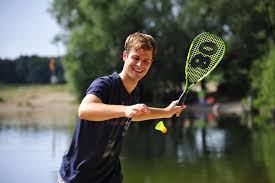
Pro Tips and 2025 Trends to Up Your Serve
Want an edge? Here’s what’s hot in 2025:
- Tech Boost: Smart rackets (e.g., Yonex’s sensor models) track serve speed and spin—use them to fine-tune.
- Pro Inspiration: Watch tennis’s Carlos Alcaraz for kick serve spin or badminton’s Viktor Axelsen for flick deception.
- Cross-Training: Borrow padel’s spin serves for pickleball or squash’s wall play for tennis angles.
- Fitness Focus: Stronger shoulders and wrists (think resistance bands) mean sharper serves.
Tournaments like the 2025 Premier Padel Tour or All England Open will showcase these trends—stream them for ideas.
Conclusion: Master the Serve Your Way to Victory
Mastering the serve isn’t magic—it’s practice, patience, and a little know-how. From tennis’s thunderous aces to table tennis’s spin tricks, every racquet sport offers a unique challenge. Start with the basics—grip, stance, swing—then tailor them to your game. A killer serve isn’t born; it’s built, one rally at a time.
So, hit the court, tweak your technique, and own that first shot. What’s your go-to serve? Drop it in the comments—I’d love to hear! Let’s make 2025 your year to serve up some serious heat.
FAQs
What’s the easiest serve to learn as a beginner?
Pickleball’s drop serve wins—bounce, hit underhand, aim deep. It’s simple, forgiving, and builds confidence fast.
How do I add spin to my tennis serve?
Use a continental grip, brush the ball’s side (slice) or up (kick) with a wrist snap. Practice tossing slightly off-center.
Why is my badminton serve always too high?
You’re likely overusing your arm. Focus on a short, wrist-driven flick—aim just above the net tape.
Can I use the same serve in padel and pickleball?
Sort of! Both need underhand, but padel loves wall spin, while pickleball prioritizes depth. Adjust your angle.
What racket helps my serve the most?
For power, try a stiff shaft (e.g., Yonex NanoFlare 800 LT). For control, medium flex (e.g., ArcSaber 11 Play) shines.
How long does it take to master a serve?
Basics take a few weeks with daily practice—10-20 serves a session. Pro-level finesse? Months to years.



